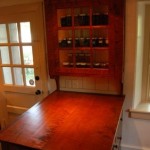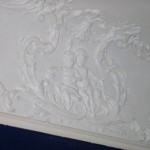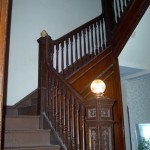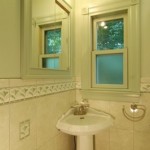Any home renovation can be a challenge. You have to consider the home’s architecture, the best use of space for your family, traffic patterns, and the interior design. Typical home renovations aren’t the same as historical home renovations. This type of renovation poses a unique set of challenges that homeowners must overcome in order to complete a successful project.
Tackling historical home renovations one step at a time is the best way to make sure you will be satisfied at the end of the project. Finding professionals you trust is also essential to project success. Select your renovation team based on their experience with historic renovations and their portfolio of work.
Once your team is in place you can begin working together to complete the renovation. Following these simple steps is a great way to ensure a successful remodel:
Do Your Research
Historical home renovations are different than a typical renovation because the home’s style and architecture is dictated by the era in which it was built. Take time to understand the home’s historical features and consider ways to bring the house back to life. If there is another historical home in the area ask to take a tour or speak to the homeowner about the renovation. You can also go online to collect images and information from other renovations to become inspired and help you devise a plan.
Learn about any city historical district guidelines. In many communities there are guidelines you must follow for renovating historic homes to help preserve the historic character of the home. A historic home is a physical record of the time and place it was built, construction techniques, distinctive features and finishes need to be retained and replicated.
Take Inventory
Renovations require careful planning to merge a modern lifestyle with the home’s original features. Determine which historical details you want to keep, such as the lighting, hardwood floors, and bathroom fixtures. Make sure that any protected items are carefully removed from the home before renovation begins. Elements such as obsolete wiring or plumbing are typically gutted and replaced with modern versions. Work with your renovation team to create a list of your priorities and ensure that the home will showcase its historical features while offering plenty of modern conveniences.
Set a Budget
Creating budgets for historical homes renovations can be tricky. You need to make sure that your budget contains the standard costs of permits, energy costs, utilities, materials, and labor. However, renovations for historical homes may also provide some unexpected surprises due to the home’s age and condition. Make sure you pad the budget by about 10% to accommodate for any unforeseen circumstances.
Create a Schedule
To minimize delays and unexpected costs you should work with your renovation team to develop a schedule of work activities in sequential order. Make sure to include an approximate start date and end date and to allow reasonable time to complete each part of the renovation. Renovations for historical homes may take longer than typical renovations because of the attention to detail and alignment with the original design.
Expect the Unexpected
Many homeowners have been unprepared for surprises encountered during their renovations for historical homes. Since you never really know what to expect you should make sure your budget and schedule can sustain a surprise or two. Understand that your plan to complete the renovation may need modifying and maintain some flexibility with your expectations.
Choose an experienced contractor
Choose a contractor experienced in historic home renovation. Do some research and talk with neighbors who have had renovations. Ask their opinions of contractors and view the work the contractors have done. Make sure the contractor is licensed and bonded.
Our team at Master’s Design Build has completed a variety of renovations for historical homes. Contact us today to learn more about the unique process of renovating a historic property.














